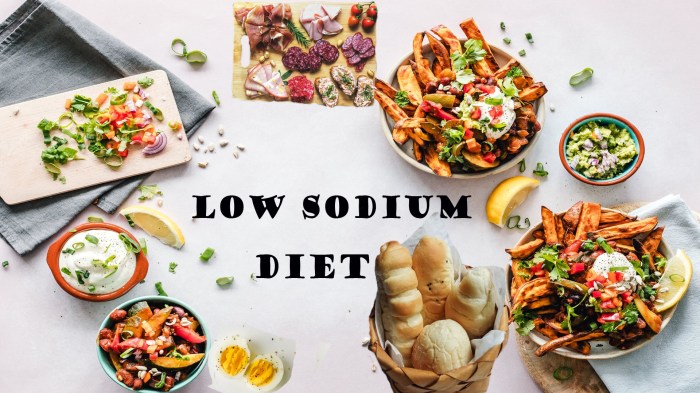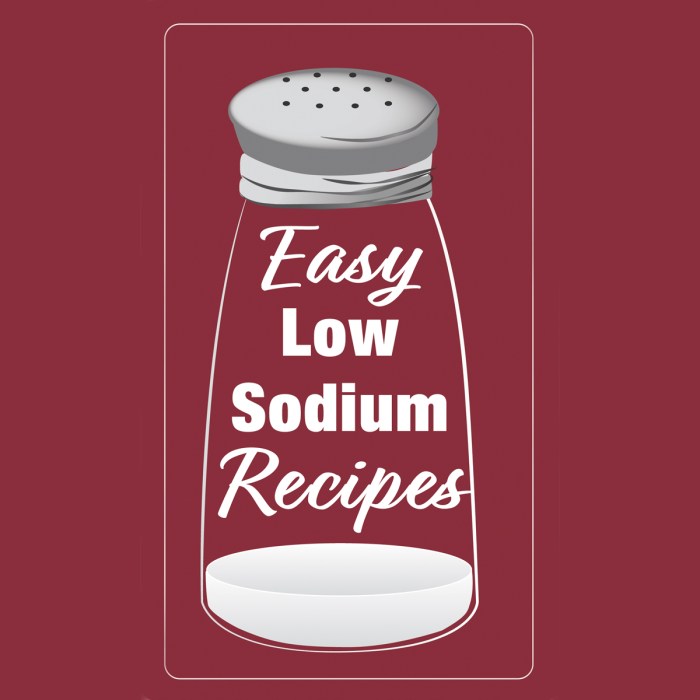Like low salt foods for example crossword, understanding the impact of sodium intake on our health is crucial. This article delves into the negative effects of excessive sodium consumption and provides practical strategies for reducing sodium in our daily meals.
Consuming excessive sodium can lead to a myriad of health issues, including high blood pressure, heart disease, and stroke. By understanding the role of sodium in regulating fluid balance and blood pressure, we can make informed choices about our dietary habits.
Low Sodium Food Options: Like Low Salt Foods For Example Crossword
Consuming a diet low in sodium is crucial for maintaining good health. Excessive sodium intake can lead to various health complications, including high blood pressure and fluid retention. To promote a healthy lifestyle, it is essential to incorporate low sodium foods into daily meals.
Fruits, vegetables, and whole grains are excellent sources of essential nutrients while being naturally low in sodium. Some examples of low sodium fruits include berries, bananas, and apples. Leafy green vegetables such as spinach, kale, and lettuce are also low in sodium and rich in vitamins and minerals.
Whole grains like brown rice, quinoa, and oatmeal provide fiber and other nutrients without adding significant amounts of sodium.
When grocery shopping, it is important to read food labels carefully to identify low sodium foods. Look for products with less than 140 mg of sodium per serving. Avoid processed foods, canned goods, and salty snacks, as they often contain high levels of sodium.
Health Implications of High Sodium Intake

Excessive sodium intake can have detrimental effects on health. High sodium levels in the body can lead to fluid retention, which can increase blood pressure and strain the heart.
Sodium plays a crucial role in regulating blood pressure and fluid balance in the body. When sodium levels are high, the body retains more water to dilute the sodium concentration. This increased fluid volume puts pressure on blood vessel walls, leading to high blood pressure.
High sodium intake has been linked to various health conditions, including hypertension, heart disease, stroke, and kidney disease. By reducing sodium intake, individuals can significantly lower their risk of developing these conditions.
Strategies for Reducing Sodium Consumption

Reducing sodium intake requires conscious effort and dietary modifications. Here are some practical tips to help lower sodium consumption:
- Read food labels carefully and choose foods with less than 140 mg of sodium per serving.
- Limit processed foods, canned goods, and salty snacks.
- Cook meals at home to control the amount of sodium added.
- Use herbs, spices, and other flavorings instead of salt to enhance the taste of food.
- Gradually reduce the amount of salt added to meals over time to allow taste buds to adjust.
Impact of Low Sodium Diets on Blood Pressure

Research has consistently shown that low sodium diets can effectively lower blood pressure. By reducing sodium intake, the body retains less fluid, which in turn reduces the pressure on blood vessel walls.
A meta-analysis of 133 trials found that a low sodium diet (less than 2,300 mg per day) significantly reduced blood pressure in both normotensive and hypertensive individuals.
Low sodium diets are particularly beneficial for individuals with hypertension. By lowering blood pressure, low sodium diets can reduce the risk of heart disease, stroke, and kidney disease.
Role of Healthcare Professionals in Promoting Low Sodium Intake
Healthcare professionals play a vital role in educating patients about the importance of reducing sodium consumption. They can provide guidance, support, and resources to help patients adopt low sodium diets.
Healthcare professionals can:
- Educate patients about the health risks associated with high sodium intake.
- Provide dietary counseling and support to help patients reduce sodium intake.
- Recommend low sodium meal plans and recipes.
- Monitor patients’ progress and provide ongoing support.
By promoting low sodium intake, healthcare professionals can help their patients improve their overall health and reduce their risk of chronic diseases.
Helpful Answers
What are the benefits of reducing sodium intake?
Reducing sodium intake can lower blood pressure, reduce the risk of heart disease and stroke, and improve overall cardiovascular health.
How can I reduce sodium intake in my daily meals?
Read food labels carefully, choose fresh fruits and vegetables over processed foods, and use herbs and spices instead of salt for flavoring.
What are the symptoms of high sodium intake?
Symptoms of high sodium intake can include thirst, frequent urination, headaches, and swelling in the hands and feet.